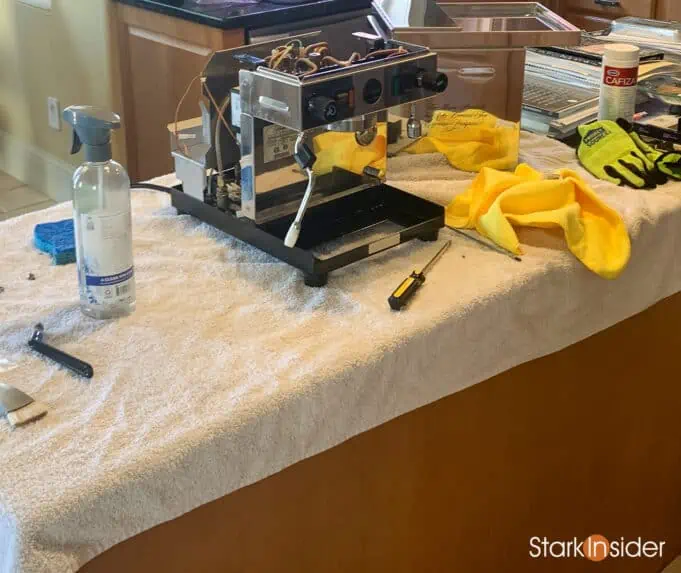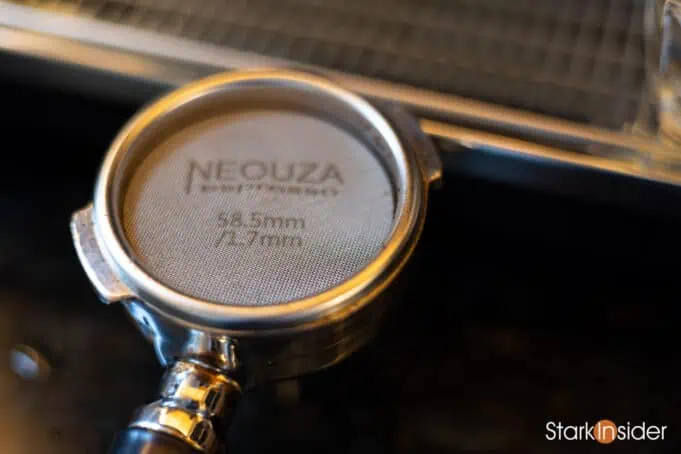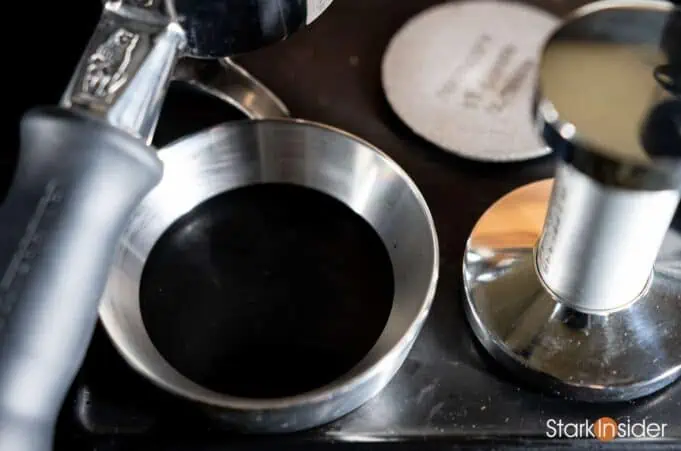Time flies when you’re having fun as they say. And such was the case when I realized my Heat Exchanger (HX) had turned 18 years old. Branded by Pasquini, but actually made by Bezzera, the thing is a workhorse. Just perform annual maintenance such as replacing the group gasket and you can make espresso shots for ages. But maybe its time had come?
Recently, I too suffered as many of us are prone to do these days from upgrade-itis.
So I began researching a new espresso workflow (accessories, grinder and machine) to improve my shot consistency and quality.
Turns out a lot has changed over the years, especially since 2020 with the onslaught of the pandemic and with shelter-in-place causing a lot of us to have more time on our hands in our homes. The result: a mini boom in all things espresso. More of us were buying espresso machines to supplant what was previously a breakroom given. Further, geekdom really arose with home baristas turning to all sorts of accessories in search of the perfect shot. And there’s a lot of them!
WDT tools. RDT spray bottles. Dosing funnels. Puck screens. Scales. Tamping mats. Tampers. Distributors and levelers.
The list goes on and on. Search YouTube for espresso videos and you’ll find in-depth explanations of how to make the perfect espresso using all of these gadgets. Some processes are so intensive it would seems as if the operator is about to launch a SpaceX rocket.

Different users will see the process in different ways. I see it as a spectrum.
There’s the art side which is basically just winging it, or, in most cases, relying on years of experience as a barista, and using mostly intuition during puck prep and pulling a shot. Go to Italy and this is what you’ll mostly see. Basically these are professionals operating in peak form with master expertise.
Then there’s the technical (or science) side. This is all about measuring everything, being fastidious in preparation and trying to eliminate as many variables as possibly by simply following a consistent workflow. Typically lots of accessories and tools are involved.
Are you on the art side? The technical side? Or somewhere in between?
For me, I’ve been operating entirely on intuition. Even for timing my shots. After years of practice you get used to the feeling of when 25-35 seconds has passed. Sure, for dialing in a new espresso machine, or bag of beans, then yes, I’ll use a scale and experiment for several shots before hitting the proper extraction. It’s unavoidable. Switching to decaf beans, for instance, will require a grinding adjustment and you’ll need to dial-in all over again.
In any case, as part of re-tooling my espresso workflow I’ve been writing on Stark Insider about various gadgets and how they’ve impacted my workflow, for the better or worse — or, in some cases without any impact whatsoever.
For those just reading up on the journey, here’s a quick summary of some tools I’ve covered and some advice on each for home baristas everywhere. Note that it doesn’t really matter if you’re just starting out or have years of experience. I believe there’s potential value in many of these accessories (but not all!) for those looking to re-tool and improve workflows.
Useful accessories for improving espresso workflow

Dosing Funnel — The premise with something like a dosing funnel is simple. It helps keep your coffee station cleaner. In practice I found this to be absolutely true in my tests.
Tamping Mat — Okay this one is obvious. You don’t want to tamp directly onto your kitchen counter, or any other surface for that matter. I do, however, like the mats that hang over the edge of the countertop so you can best position your body above for an even tamp of 20-30 pounds. I wrote about the Normcore mat on Stark Insider and came away impressed.
Digital Scale — I consider these mandatory. Even if you don’t necessarily use a scale for every single espresso shot, you’ll need one when dialing in a bag of beans or even a new machine or grinder. TIMEMORE is a popular, well-priced option and wrote about my experience and test results. On the higher end side there’s the ubiquitous Acaia Lunar which is pricey at $250. I’ll share some thoughts on that scale in an upcoming review, and whether it’s worth the extra money.

Puck Screen — These are little metal discs you insert on top of the portafilter and puck that promise to reduce channeling and keep your group head cleaner. Both things I think we can all appreciate. I wrote about that as well (Do puck screens really work?) and shared some experiences. (Hint: yes!)
On the fence
WDT (or Weiss Distribution Technique) — With WDT the idea is to reduce clumping and inconsistency from grinds before tamping your portafilter. I have mixed feelings about this one to be frank. After all, next you’re going to tamp everything quite firmly. So won’t that mean all the grinds are impacted and, thus, eliminate all of the clumpiness (not sure that’s a word). Or at least pretty close to it? I suspect if you have an older grinder that’s producing poor grinds this might help, but I’m skeptical. I’ve never — never! — seen a professional barista at a café anywhere in the world use one. Is that a clue?
RDT (or Ross Droplet Technique) — Another sort of new age or third wave related technique. By spraying beans during a single does prep you potentially reduce static cling and improve retention. I don’t single dose so this one for me is a toss-up. From YouTube videos I’ve watched it looks like RDT does, indeed, make a difference. Again, is some added step like this absolutely necessary? I mean, how many gadgets do we need when making espresso?
Still to test
Flow control — Not an accessory to be fair, but worth considering. Flow control is a more recent phenomena in the world of espresso machines — or at least home machines. Typically found on higher end models the idea is that the user can adjust the flow — pressure — of water hitting the puck. With flow control you could, for instance, dial down pressure for, say, a 3-bar/2-second pre-infusion before increasing the pressure back up to 9-bar to complete the shot. With this capability you can create profiles and really dial in flavor profiles and unique extractions depending on the type and source of bean. Cleary this is a pretty advanced topic and feature. Machines such as the well-regarded Decent DE1 and DE1+ with touchscreen interfaces really make for an interesting user experience when dealing with flow control (and other advanced parameters). Other manufacturers make machines with flow control such as ECM/Profitec, La Marzocco, Rocket Espresso, Dalla Corte, Lelit, among others.
More to come in search of the perfect espresso

Earlier I mentioned that my HX was possibly on its last legs. In addition to upgrading my workflow with various aforementioned accessories I’ve also embarked on researching the market for a new espresso machine. One that will hopefully last decades into the future. I’m probably ready to move on from the HX tech as I do get frustrated with the heat build up and required cooling flush to bring things back to a suitable temp before pulling a shot. So I’m thinking dual boiler?


